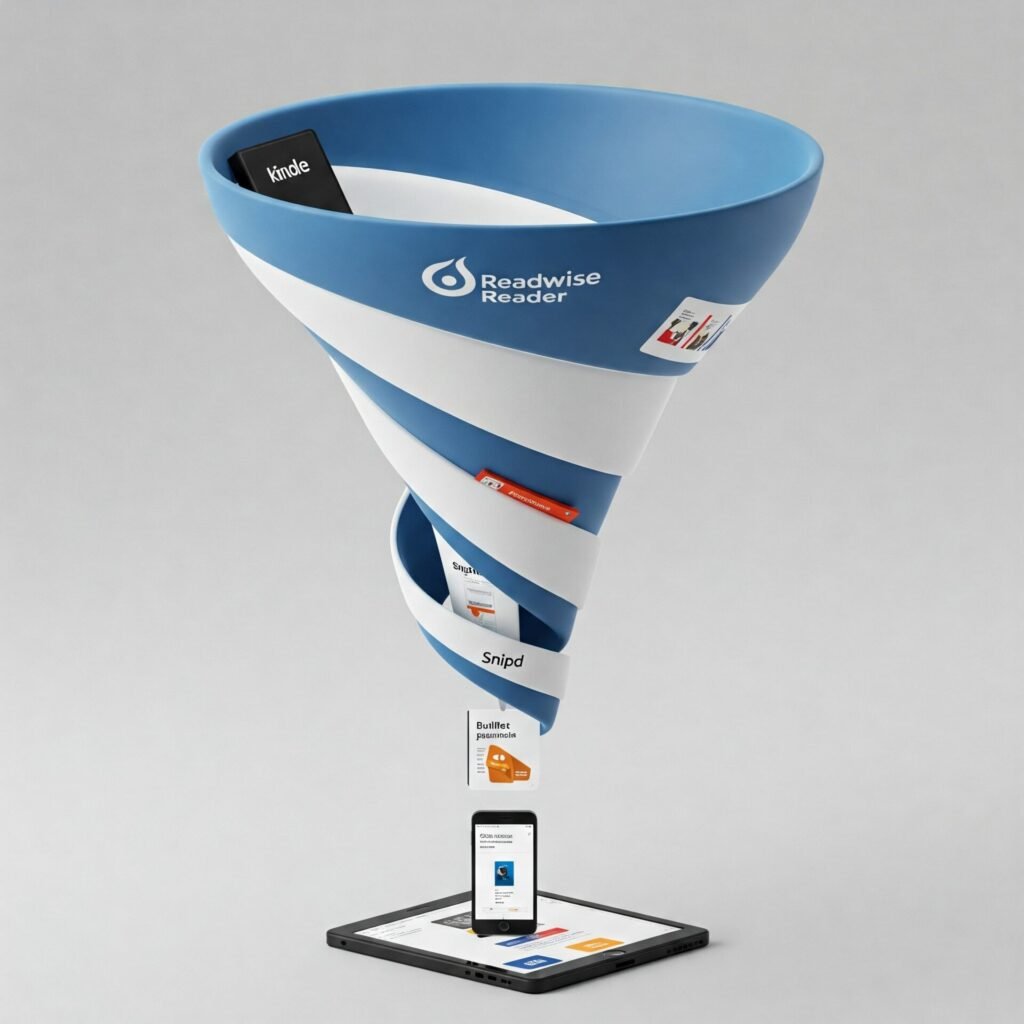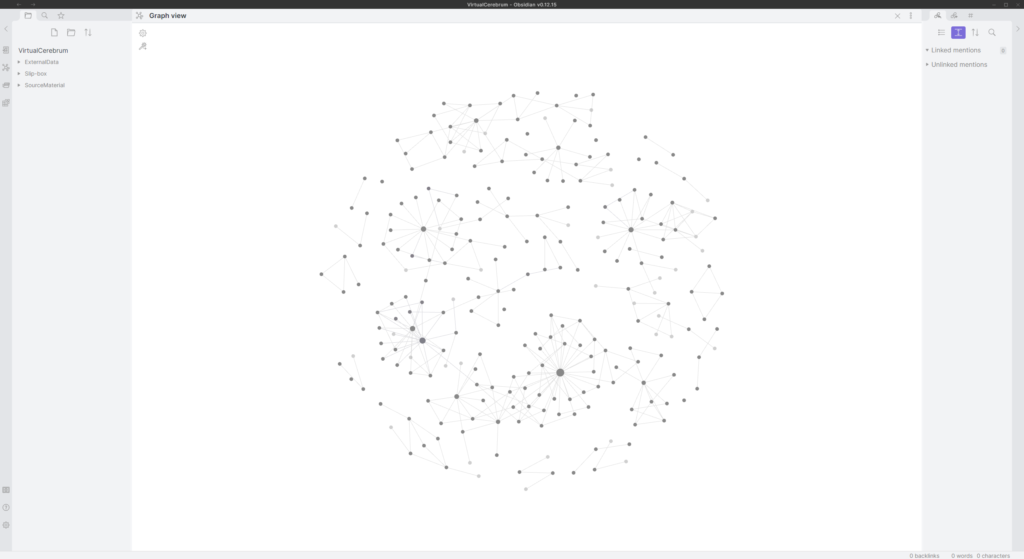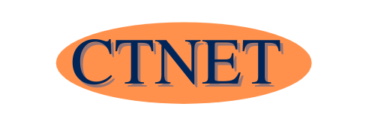I considered calling this ‘Why You Must Have a Personal Knowledge Management System in 2025′ because I believe it’s becoming essential. Are you feeling overwhelmed by the constant flood of information? In 2025, a Personal Knowledge Management System (PKM) won’t just be helpful – it will be essential.
You might be wondering what difference a Personal Knowledge Management System (PKM) can make. The answer? It puts you back in control of the information you consume, rather than the other way around.
I started my PKM in 2021, and I’m going to persuade you to start one by sharing my experiences – warts and all.
The problem of Information overload in 2025:
We’ve all been there, scrolling endlessly through Tweets and YouTube videos, feeling like we’re drowning in a continuous stream of information and experiencing Fear of Missing Out (FOMO).
Artificial Intelligence’s ability to generate even more information only adds to this ever-growing flow.
We need a way to filter out the information we’re truly interested in and store it in a ‘content reservoir’ to consume at our leisure, when we have time to turn it into knowledge.
This is where a knowledge management system comes in.
The benefits of having a Personal Knowledge Management System for clarity and focus:
Many, including myself, have found that developing a Personal Knowledge Management (PKM) system helps reduce information overload. The benefits include:
- It negates the fear of missing out, as you have a system to capture content for later consumption.
- It reduces the impact of cognitive overload caused by the stress of information overload
- It can enhance creativity and insight. This benefit grows as your system grows, improving as the number of notes and links increase over time. You will eventually start to see connections between what you are reading and your existing notes. A sign to myself that the Zettelkasten is helping to expand my mind.

Why 2025? How the information landscape is evolving in 2025:
I can answer that in two words: Artificial Intelligence. It’s going to have a massive impact on our lives over the next few years, and while much of it will be beneficial, there are potential risks to our mental capabilities.
Using a Personal Knowledge Management system can help you manage this risk by slowing down the processing of information into knowledge. Start by simply writing down your thoughts and ideas in your own words – you’ll be surprised at the difference it makes.
The act of writing itself can help you discover new thoughts and ideas as you work with the material. Therefore, you want to write as much as possible, and a Personal Knowledge Management system facilitates this.
Once you’ve processed this information, you can work with Artificial Intelligence as if it were your own personal assistant. I’m still figuring out how this will work for me, but you can get an insight into my current thinking by reading Using AI with my PKM.
My experiences with Personal Knowledge Management System:
A good Personal Knowledge Management system (PKM) will filter out the noise, allowing you to focus on the content that interests you. I used to spend hours each day mindlessly consuming information, but now I’m much more intentional about what I read and watch.
As this post is aimed at readers who are new to PKM, I want to keep it simple. I’ll share a link to a post on my current PKM stack, which I’ve developed incrementally over the last five years, and I urge you to start in the same way.
After all, your requirements will differ from my own, and in my experience, your requirements are likely to change over time.

Zettelkasten: Your digital brain:
At the heart of my system is my ‘digital brain’, closely based on the Zettelkasten method. I recommend it to any beginner, as it’s an easy system to pick up and can grow with your requirements.
The Zettelkasten method is based on linking notes with other related notes, with each note being self-contained. This linking of ideas enables you to transform information into meaningful knowledge.
A Zettelkasten is comprised of three different types of notes:
- Fleeting notes: These are the initial notes you take. They might be a highlight in a book or the first scribbling of an idea you had while walking your dog. Keep a small notebook or use a note-taking app on your phone to capture these fleeting thoughts – they’re the most important note, as they’re the first step in turning information into knowledge.
- Literature notes: If your fleeting note was taken from a book or article, you then create a more detailed summary in a literature note, which also contains details of the source material, enabling you to reference it if needed.
- Permanent notes: These are the atomic notes that live in your Zettelkasten, and it’s the linking of these permanent notes that creates your web of knowledge.
Capturing What you wish to consume later:
At the start of this post, I stated that the benefit of a Personal Knowledge Management (PKM) system is that it allows you to filter out the noise and concentrate on the content you wish to consume.
I then jumped to how you can process the information you consume into a ‘digital brain’ in the form of a Zettelkasten. But there has to be a system between these parts, and for me, this is the hardest part to master effectively.
While I’m happy with my PKM stack at the moment, it’s the part that’s most likely to fail me, and the one I’m constantly tinkering with to improve workflow. The issue is the sheer amount of content that enters my system.
That’s why I advise you to start your Zettelkasten first and simply keep a list of the content you want to consume. Alternatively, take web clippings into your note-taking application and have an ‘inbox’ folder to process them later.
Once you’ve got your Zettelkasten up and running, look at getting this part working for you by exploring applications such as Readwise Reader.
How to start your own Personal Knowledge Management system in 2025:
In this section, I’ll share what I would do if I were starting a Personal Knowledge Management system in 2025.
- Choose an application with the ability to link notes. Obsidian is still an excellent choice, supporting backlinks, tags and folders.
- Start your Zettelkasten. If you’re using Obsidian, create a single folder in your vault for your Zettelkasten. This folder should contain two subfolders: one for your literature notes and another for your permanent notes.
- Read content about the Zettelkasten method to help you get started.
- Once you’re comfortable with your Zettelkasten, look to extend your Personal Knowledge Management system by creating a stack for processing and storing future notes for your Zettelkasten.
There’s no rush, and don’t feel pressured to create the perfect system. There isn’t one! We each have different requirements for our Personal Knowledge Management system, and those needs will change over time as your interests and requirements evolve.
Why don’t you start your Zettelkasten journey today and experience the power of organised knowledge?
To keep up to date with our latest Personal Knowledge Management insights, subscribe to our weekly newsletter.
Future reading
- Is Information overload preventing an Information golden age?
- From Information Overload to Knowledge Powerhouse: Building Your Personal Knowledge Management Stack
- Introduction to the Zettelkasten system
- Smart Connections by Sönke Ahrens
- The essential guide to managing fleeting notes for productivity and knowledge management
- CTNET Guide to Managing Literature Notes
- Navigating the Intersection of AI and Zettelkasten – My personal journey
- How I use Reader to funnel information and knowledge
- Creating a Zettelkasten system in Obsidian
- Obsidian review 2023

